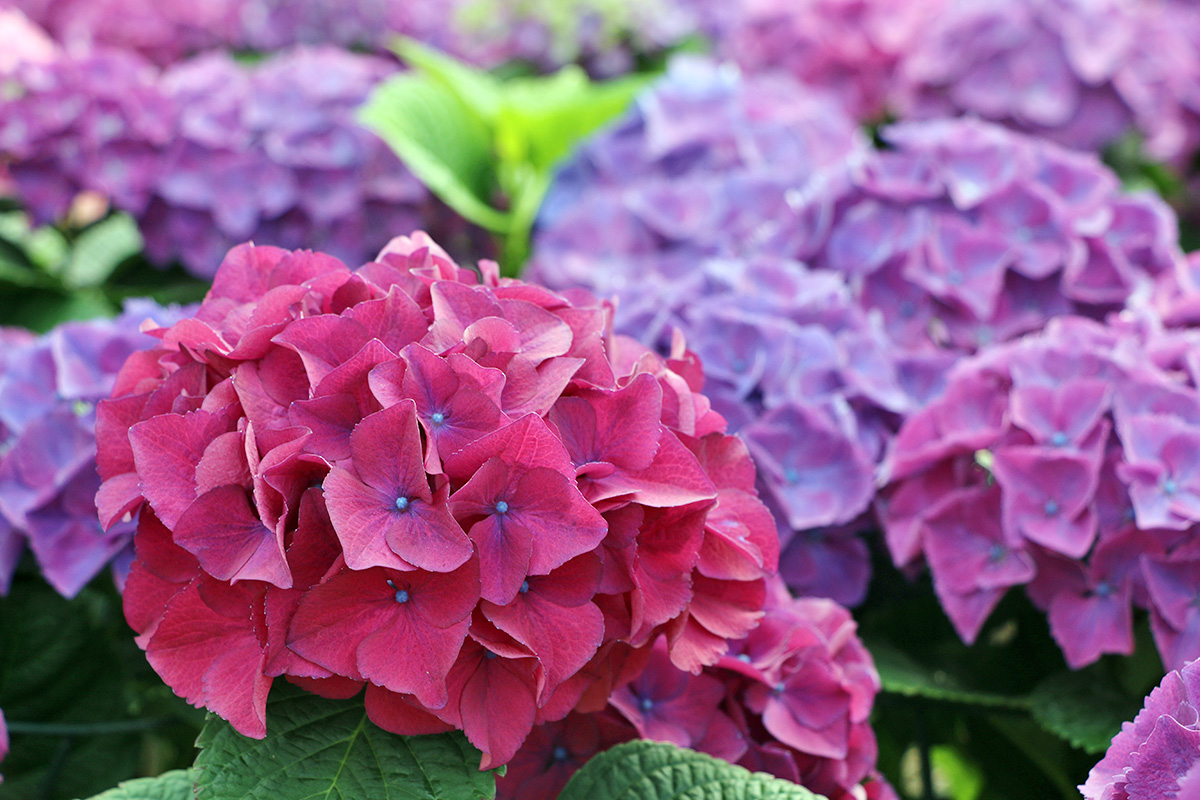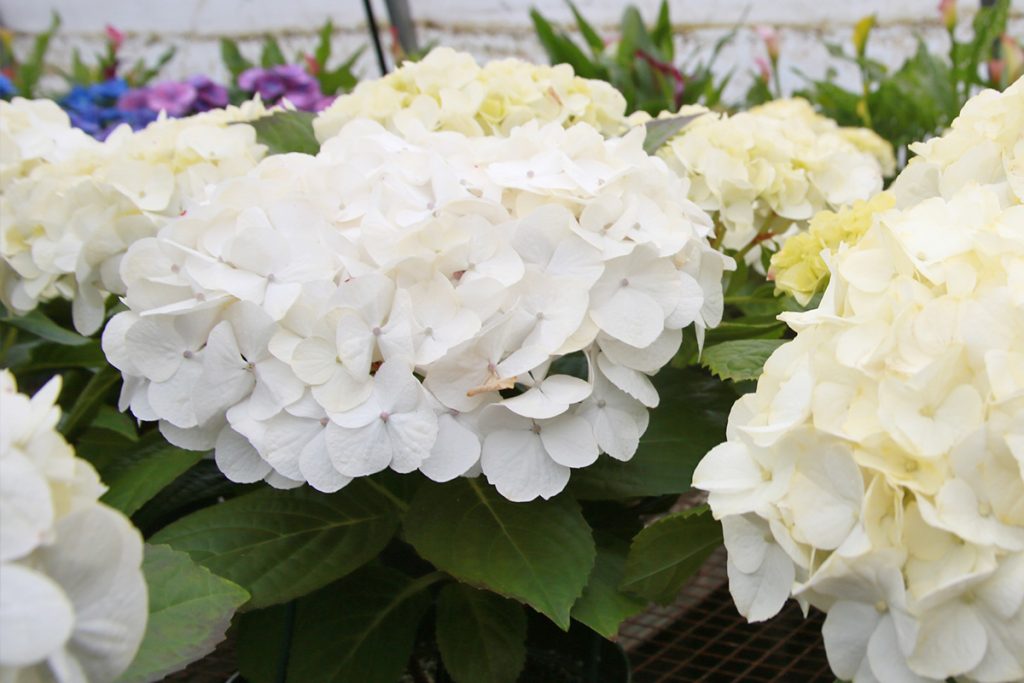
Hydrangeas are a popular shrub and for a good reason. From mid-summer to fall, they produce beautiful blooms in your gardens. They come in a number of species, hybrids, and cultivated varieties. Plus, based on the acidity of your soil, you can change the color of your blooms. With blooms resembling small snowballs, growing hydrangeas is a lot of fun. They are not only easy to grow but are also quite hardy and resistant to most pests and diseases. With numerous varieties to choose from, you are certain to find one that is right for you.

Location
Most types of hydrangeas can be grown in full sun or partial shade. It is important to note that they do not like extremely hot conditions, so put them in a spot where they can have some afternoon shade. They should be planted in spring or fall. If you are planting them in fall or leaving them over the winter, cover the plants to a depth of at least 18 inches with bark mulch, leaves, pine needles, or straw.
Soil
While hydrangeas can be grown in a wide range of soils, they prefer rich, moist soil that drains easily. If your soil is rich, you may not need to use fertilizer. If you have sandy soil, feed your plants once a year in late winter or spring. Be careful not to use too much as that encourages more leaves and fewer blooms. If you have poor soil, enrich it with compost before planting. Good soil has at least 5% organic matter. spread your compost 2-6 inches across the entire bed. Hydrangeas grow best with a higher level of organic matter. To plant, dig a hole as deep as the root ball and 2-3 times as wide. Set the plant in the hole and fill it half full with soil. Water then add fill the rest of the hole after the water has drained. Space multiple hydrangeas 3-10 feet apart.
Water
For the 1-2 years after planting, be sure to give your hydrangeas plenty of water. Be careful how much you water. These plants prefer moist soil that is not too wet. Overwatering can cause hydrangeas to produce fewer flowers. They typically enjoy a deep watering once a week, especially in dry weather. Adjust how often you water based on your soil type. Clay soil holds more water than sandy soil and produces more runoff as the water can’t sink in as well. If you plant your flowers in an area with high temperatures, they may wilt in the afternoon, but perk up in the evening. Try watering in the morning or evening when the sun is less hot. You can also use mulch to conserve water and keep the ground cool.

Pruning Care for Hydrangeas
Different types of hydrangeas need different types of pruning.
Mopheads and Lacecaps: These are a common type with large, globe-shaped flowers. Prune these in late summer.
Oakleaf: Another common variety with fall colors and oakleaf-shaped foliage, this variety is best pruned in early spring.
Panicle (Pee gee): This variety has white flowers in summer that gradually turn pink. Prune to remove dead blooms and cut back the plant in late winter/early spring.
‘Grandiflora’, or Hills of Snow hydrangea: Prune these to the ground each winter or early spring.
Hydrangea vine or climbing hydrangea: These don’t usually require pruning, but may be done to keep new shoots under control.
Changing the Color of a Hydrangea
A cool thing about hydrangeas is that you can change their color, especially Mopheads and Lacecaps. This is dependent on the pH of the soil. Acidic soil with a pH less than 5.5 produces blue flowers. Soil with a pH greater than 5.5 produces pink flowers. If you have white flowers, they are not affected by pH.
If you want to change the color of your flowers, this can take weeks or months. It is easier to change blue flowers to pink rather than pink to blue. Wait until your plant is at least 2 years old before you start color correction.
- Start with the Hydrangea macrophylla and test your soil pH.
- To get blue flowers, lower your pH by adding sulfur or peat moss to the soil.
- To get pink to light red flowers, raise your pH by adding ground limestone only around the plant. Warning: A pH above 7.5 will result in poor growth.
- Hard water can also affect the flower color. Ble flowers will look more pinkish. Combat this by using rainwater to water your hydrangeas.
- In the fall, hydrangea flowers will naturally fade to a combination of pink and green. Do not worry as this is the aging process. Next year, the flowers will return to their original color.
https://bengertgreenhouses.com/flowers/hydrangeas-101/